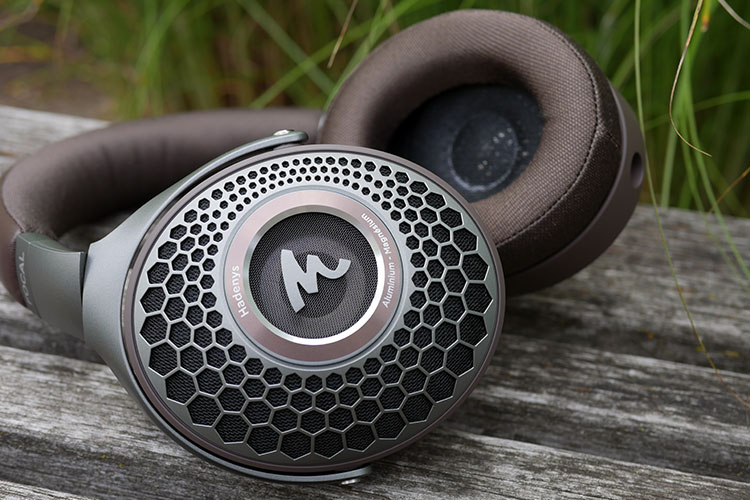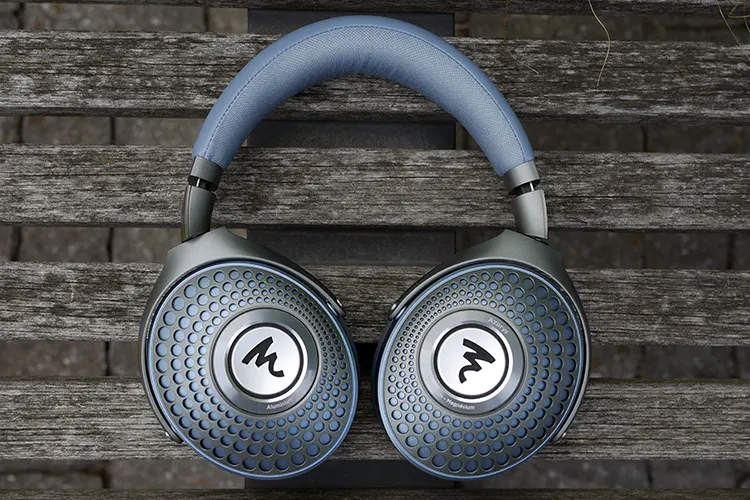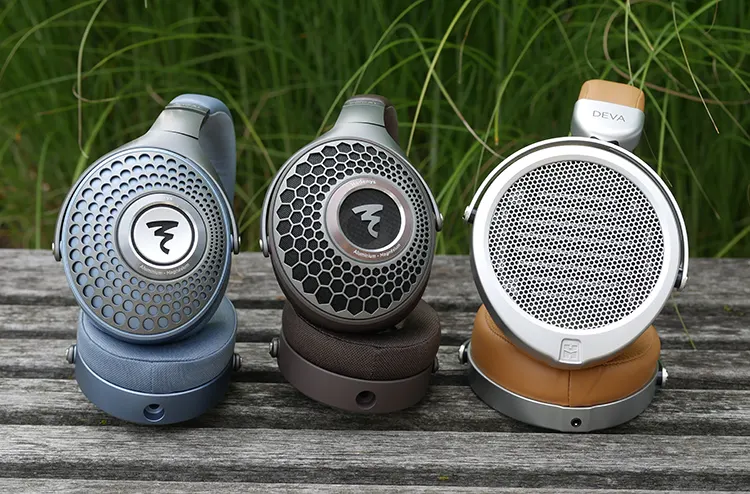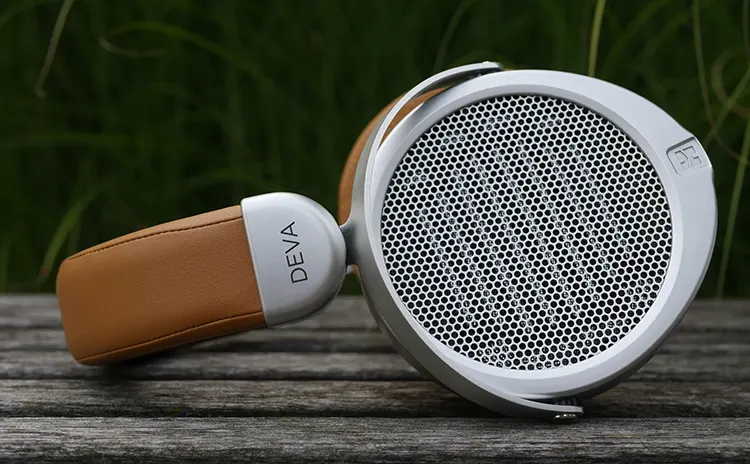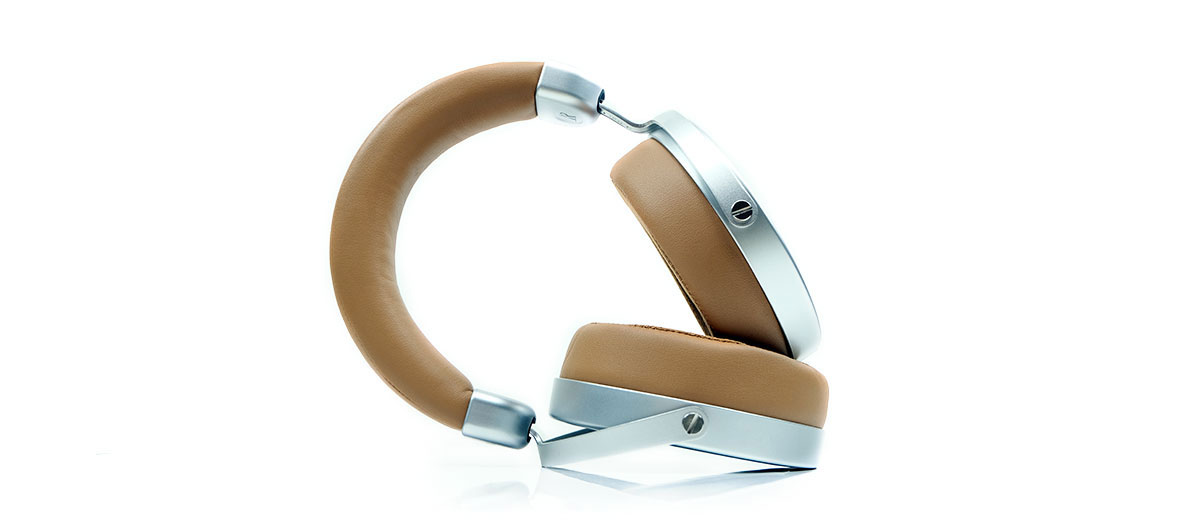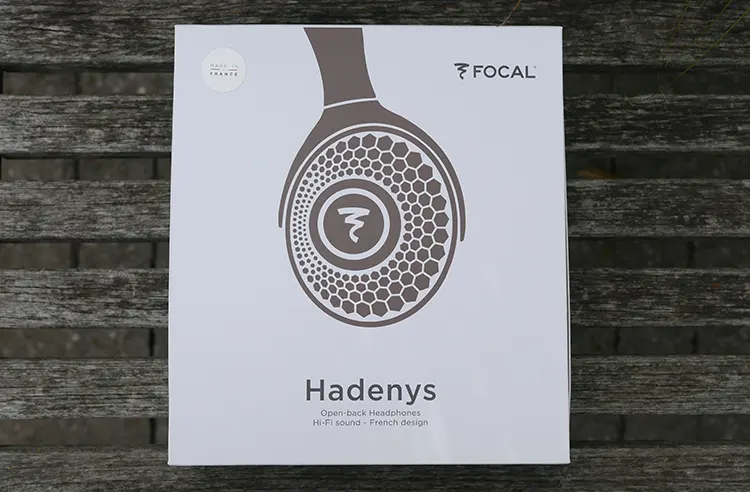Synergy
Efficiency
This lovely set of headphones has a sensitivity of 105 dB/mW and an impedance of 26Ω. They can easily be brought up to comfortable listening volumes by a smartphone as basic as the Motorola Moto G Play – 2023.
A nice aspect of the Hadenys is that the source has a minimal effect on the signature. Nothing I tested it with caused unwanted background hiss or shifted the signature significantly, be it a cheap desktop amp like the FX Audio D302 Pro, or a quality portable source like EarMen’s TR-Amp.
That said, I found volume played a significant part. At the low volumes that I tend to listen to the Hadenys sounds flat and lacking in dynamics and energy.
Increase the volume to the higher end of what I find comfortable and beyond, and it wakes right up. The low end gained a ton of punch, the mid-range detail stepped forward, and the upper treble displayed the sparkle and vibrancy it was missing at lower volumes.
Pairings
Pairing the Hadenys with the ddHiFi TC35 Pro “Mountain” dongle DAC was a pleasant experience. It was easily able to bring the Hadenys to high volumes.
The treble presentation exhibits a subtle hardness to it, and the low end produced less punch when compared to some of my other sources. Even still, the Hadenys’ basic signature was still there, and the overall experience was still positive.
Staying mobile but jumping up in quality, we have the Earmen TR-Amp. Achievable volumes were even greater here, which makes sense given the form factor and higher-quality components.
This amp could work with the Hadenys either in portable or mobile setups given it has a built-in battery. I preferred to use it in a portable desktop role, taking it with me to the various places I listen to music in my home, like the couch, bed, office, etc.
Compared to the TC35 Pro, the Hadenys signature was about the same but with the treble being softer and less edgy, and the bass a tad punchier. The mids gained some thickness reducing clarity.
Moving to the TEAC HA-501 desktop amp, the Hadenys performs best. Through the HA-501, the Hadenys is clean with smooth and crisp treble, realistically dense mids, and deep, thumping bass with solid texturing.
The HA-501 has a damping feature that can be used to clean up the output with more sensitive sources. Since the Hadenys lacks any hiss or distortion through the HA-501 on any of the 5 damper settings, I used it to fine-tune the output.
As you increased the damper, the midrange lost emphasis resulting in the Hadenys being more V-shaped at the max setting. I preferred to leave the damper at ‘Mid’ or one step down since it offered the most balanced presentation.
Select Comparisons
Focal Azurys
Technical
The Hadenys and Azurys feature the same 40mm aluminum/magnesium ‘M’-shaped dome drivers. These drivers are tucked into different styles of headphones, with the Hadenys being open-back, and the Azurys closed-back.
Materials for the build are nearly the same, being mostly metal with magnesium yolks, a leather and cloth headband, and memory foam-filled cloth ear pads. The Azurys seal the cup with more plastic, though it’s tucked behind the distinct grille and doesn’t stand out.
Both feature the same recessed 3.5mm ports which should work well with various 3rd party alternatives.
Their stock cables, of which the Azurys are shorter and thinner, have bulky connectors at the headphone end that fill the opening, which produces a very secure fit with excellent protection from bends and tugs.
Sensitivity is 100 dB on the Azurys and 105 dB on the Hadenys, while impedance is 26Ω on both.
While the Azurys is slightly harder to drive, the closed-back design leads to the perception that it is easier to bring up to volume since it doesn’t have to contend with external noise to the same extent as the Hadenys.
Design
While there are distinct differences between the Hadenys and Azurys, their designs are exceptionally similar.
The two models share many parts, like the headband, ear pads, and magnesium yolk design. The ear cups are also the same size and shape, though the finer details make their open- and closed-back designations obvious.
Swapping the hexagonal grille openings for circular ones, you find the Azurys grille is placed on top of a solid plastic cup. The fine mesh on which the Focal logo resides on the Hadenys has been closed off for the Azurys, and a plastic disc with a logo cutout now rests on top.
The two have vastly different colorways with the mature brown of the Hadenys being swapped out for a calming blue on the Azurys.
For my tastes, the Hadenys are by far the more attractive of the two, but I’m also more traditional with my hi-fi gear and prefer darker, more subtle colorways.
Ergonomically the two are identical and both offer plenty of movement in the cups, allowing them to fit snugly to the user’s head, and feature the same well-padded headband and earpads. This also means they share the same intimate earcup openings.
They both fold flat for storage or should you be listening out in the wild and sling them around your neck, fold flat with the speakers pointing towards your body.
Not only does this protect them, but if you still have your music playing it shields passers-by from having to listen to it.
Bass Performance
Bass performance on the two is surprisingly close given one is open-back and the other closed. They both provide good visceral feedback and have a notable mid-bass thump with good texturing and detail
Still, the Azurys digs deeper, notes are tighter, punchier, and better controlled, and sub-bass hits are more visceral. Texturing from the Azurys is also a little better with grungy notes having a hint of more grit.
I found both to perform well and on a similar level. The Azurys’ better-balanced sub- and mid-bass regions and improved technical aspects make it the better model for bass performance.
Mids Performance
The midrange on these models sounds exceptionally similar with mild perception variances caused by interactions from the low and highs.
The presence region of the Azurys is more prominent leading to the upper mids being clearer than they are on the Hadenys.
The additional low-end emphasis of the Azurys also warms the midrange slightly, giving it a thicker presentation which hinders clarity on deeper vocals.
Sibilance is managed well on both models, but the Hadenys with its more relaxed presentation handles it better. Again, the differences are minimal but on extremely sibilant tracks the Azurys is more aggressive and edgy.
Treble Performance
Here is where the two are most different with the Azurys being more vibrant and livelier with more shimmer and sparkle. The extra brilliance region emphasis also gives it more air and space when compared to the Hadenys.
The softer, more relaxed presentation of the Hadenys results in it being a smoother listen. This helps keep it a comfortable listen since like the Hadenys, the Azurys sounds best at mid to high volumes and can become fatiguing over longer listening sessions.
Detail levels are slightly better out of the Azury, with fine nuances showing up more. Again, the differences are quite small, but listening to the same passages back-to-back it is noticeable.
Staging Performance
The soundstage of the Hadenys is wider, deeper, and more spacious than it is on the Azurys. This shouldn’t come as a surprise given one is open-back, the other is closed, and they use the same drivers.
Despite this, their technical performances are on par. Imaging is just as smooth and accurate on either model with good off-center accuracy and edge definition.
I would give a slight edge to the Hadenys for its layering qualities since instruments and effects have more space to play in. Instrument separation is as far as I can tell identical, with it being just as easy to single out individual track elements on either model.
HIFIMAN DEVA
Technical
Focal’s Hadenys utilizes a 40mm, aluminum/magnesium “M”-shaped dome dynamic driver. The DEVA features a planar magnetic driver with HIFIMAN’s ultra-slim NEO “supernano” diaphragm (NsD) technology.
The DEVA’s build is a mix of plastic with metal yolks and grilles. It has a thick, faux-leather headband with ample padding, and angled pads with faux-leather sides and breathable fabric where they rest against your head.
In contrast, the Hadenys are mostly metal with magnesium yolks, metal grilles, and plastic surrounds. The plush headband is made from real leather and cloth, while the pads are entirely cloth containing supple memory foam.
Both models utilize standard 3.5mm ports to plug in a cable which allows a wide variety of 3rd party options to be used. On the Hadenys the port is recessed which provides effective protection against unexpected bends or tugs but will limit 3rd party cable options compared to the DEVA.
The sensitivity of the Hadenys is 105 dB compared to 93.5 dB for the DEVA while the Hadenys impedance is 26Ω compared to the DEVA’s 18Ω. The Hadenys are considerably easier to bring up to comfortable listening volumes.
Design
HIFIMAN and Focal have taken very different directions in the design of their portable open-back headphones.
The DEVA’s look is traditional planar, with a plain yet massive protective grille being the dominant feature. The rest of the design is simple with slender yolks, a sleek headband, and minimal branding pressed into the plastic surround under the grilles.
The silver and tan colorway was an odd choice. It looks attractive enough though, and helps the DEVA stand out amongst a sea of black and grey models from competing brands.
Focal’s design is more interesting. Hadenys’ grille features a hexagonal pattern surrounding a fine metal mesh on which the updated Focal logo featuring an unbroken flame resides.
The headband’s dual material design looks and feels more premium and has a more ergonomic shape that better conforms to the natural curvature of the human head.
Focal’s brown colorway for the Hadenys is also unusual. Since they opted for shades of brown across the entirety of the headphone the resulting design is more cohesive than what was selected for the DEVA.
Ergonomics and comfort are superior on the Hadenys. While neither headphone is all that light, the Hadenys is less weighty.
While the Hadenys clamping force is stronger, the cups provide more articulation allowing the memory foam to sit comfortably around the wearer’s ears.
The opening for your ears is slimmer on the Hadenys, however, so there is a chance those with large ears might find them brushing against the cloth pads, causing discomfort long-term.
On the other hand, while the DEVA’s opening is larger, the cavity is not as deep, nor are the drivers angled like they are on the Hadenys. As such, those with ears that protrude more prominently may find them brushing against the cloth protecting the driver.
Bass Performance
Both models offer strong bass performance from their open-back designs and driver configurations.
The strengths of the DEVA’s planar are speed, control, and clarity. It performs better with rapid notes and transitions, offering a snappier attack and more rapid decay, alongside additional texturing and micro-detail.
The Hadenys produces a smoother and more natural sound. It also offers a warmer, punchier mid-bass region and improved extension for greater visceral feedback on the deepest notes, with both models rolling off at the deepest sub-bass regions.
Mids Performance
Heading into the mids we find the Hadenys has a warmer, more natural timbre and a smoother, more refined presentation. Vocals sit further back in the mix highlighting the strong bass performance.
In comparison, the DEVA’s mids are evenly emphasized, until you reach the upper mids which are slightly more forward and detailed with better note definition and clarity.
They are cooler though, which results in a less natural sound, especially with female vocalists and warmer instruments and effects.
Sibilance is also handled better through the Hadenys taking the edge off harsh tees and esses and restricting the uncomfortable sizzle they produce. The DEVA doesn’t do much to mitigate sibilance, though it also doesn’t add or exaggerate it where it isn’t already present.
Treble Performance
Heading into the upper regions we find the DEVA offers more brilliance region energy with a thinner note presentation. Again, detail and clarity are a step ahead of the Hadenys, but it comes at the expense of being slightly artificial.
Hadenys’ treble is more brilliance region-biased with just enough shimmer and sparkle to keep the energy levels up, but not so much as to cause fatigue.
Clarity is somewhat muted compared to the DEVA, however, offering plenty of detail, just not as much as HIFIMAN’s offering.
Refinement is again in the Hadenys’ camp as notes are tighter and cleaner with better edge definition. The additional thickness hinders clarity though, hence the DEVA’s detail and coherence advantage.
Staging Performance
While the Hadenys has a solid sound stage, the DEVA’s is noticeably larger. The default vocal positioning on the DEVA sits just past the ear, while on the Hadenys it sits just even with the side of your head.
This difference permits a more dynamic soundstage from the DEVA. Intimate sounds can move closer, while distant sounds have more room to travel away.
Technical qualities are where the Hadenys pull back some points. Channel-to-channel positioning is smoother and more precise, particularly just off-center.
While instruments are given more room to play in the DEVA, the Hadenys can match it in terms of layering. Instrument separation is slightly behind on the DEVA making it easier to focus on individual track elements through the Hadenys.
My Verdict
While I’m not in love with the Hadenys, it has grown on me as I’ve used it over the last few weeks. What it lacks in immediate “wow-factor” out of the box, it makes up for in consistency and general competency with basically everything you toss at it.
The tuning is well-rounded with surprisingly strong bass for an open-back, smooth mids, and refined treble. Detail levels aren’t outstanding, but they aren’t lacking either, and the presentation is non-fatiguing and works well across a wide variety of genres.
The Hadenys’ signature epitomizes the “jack-of-all-trades, master of none” saying. It is smooth, refined, entertaining, and generally competent, but doesn’t lead the pack in any aspect.
The physical design on the other hand is fantastic. It’s well put together with quality materials and is ergonomically quite good, though improvements could be made to the clamping force and headband to improve long-term comfort.
The included cable is probably the weakest part of the entire experience, and even that is perfectly fine. This is a hard headphone to find fault in given its reliability in every aspect.
Focal has a fantastic all-rounder in the Hadenys and I have a hard time imagining anyone would be disappointed with it.
Focal Hadenys Technical Specifications
- Frequency Response: 20Hz–22 kHz (+/- 3dB)
- SPL: 105 dB @ 1m
- Impedance: 26Ω
- Harmonic Distortion: <0.2% @ 1kHz / 100 dB SPL




